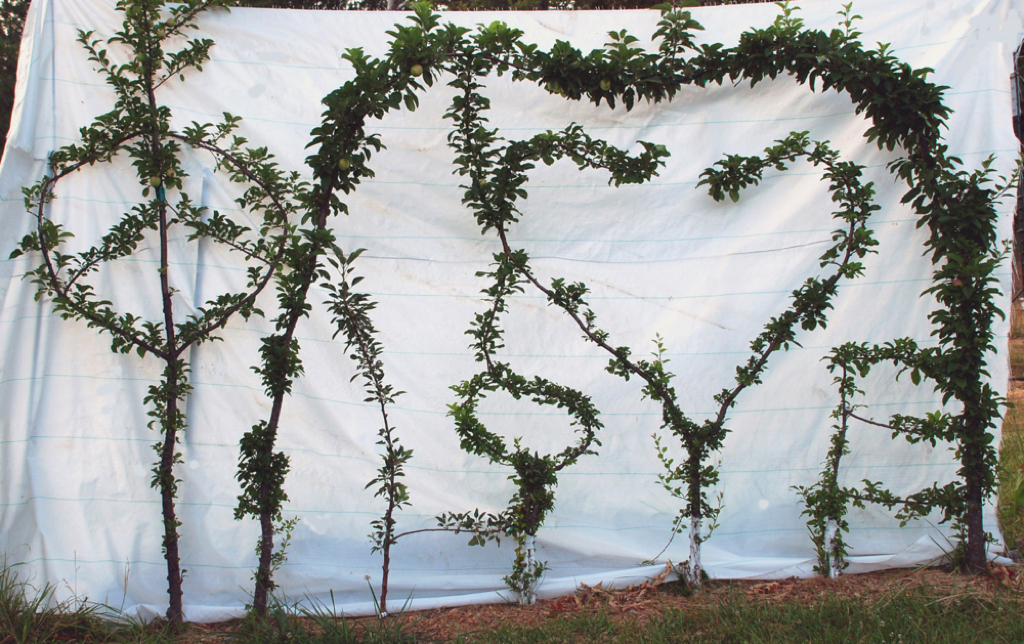http://eepurl.com/iNyRAk View this email in your browser



White paper
Title:
Rapid Arborsculpture: A Technique for Grafting Detached Sions of Woody Plants Into Living Useful or Artistic Shapes
Abstract:
This paper introduces a pioneering method for swiftly creating living arborsculptures by grafting detached tree scions. By employing woodworking techniques and precise grafting, this approach expedites the formation of ornamental or functional shapes in living trees, enhancing control, and versatility compared to traditional methods. The paper outlines the methodology, results, and implications of this innovative technique, showcasing its potential in horticulture, landscaping, and artistic endeavors.
Introduction:
Arborsculpture, the art of shaping living trees, offers unique possibilities for creating functional or aesthetic structures. However, conventional methods often require extensive time and effort. This patent application presents a novel approach that accelerates the arborsculpture process by grafting detached tree scions. By leveraging woodworking techniques and precise grafting, this method aims to revolutionize the creation of living tree art, offering enhanced control, versatility, and durability. The following sections detail the methodology, results, and implications of this innovative technique.
Methods:
1. Scion Selection: Dormant tree wood pieces are gathered as raw material for grafting, ensuring consistency in diameter, health, and disease-free status. These scions are stored under cold conditions, maintaining dormancy until ready for use.
2. Preparation of tree branches and trunks: Suitable living tree branches are identified and trimmed to desired lengths, removing excess foliage. Dormant parts are kept under cold conditions, ensuring moisture retention with plastic wrap, or parafilm or similar materials.
3. Grafting Technique: Woodworking tools, chop saw and nail gun and techniques, such as notching, mortise and tenon, and splining, are employed to assemble scions into precise shapes. Cambium layers are matched to promote cohesive growth, and scions are secured using various methods such as screws, tape, or glue to maintain the design.
4. Rootstock Preparation: The assembled scions are attached to rooted healthy tree rootstocks, ensuring compatibility in species and size. External support frames may be added to promote stability during the grafting process.
5. Shaping and Forming: As the grafted wood pieces grow, pruning is performed to direct growth towards the desired shape. Inspections and manipulation may need to be performed every three days minimum during the growing season. 6. Maintenance and Care: Regular monitoring and care, including watering, fertilization, and protection from pests, are provided to preserve the shape and health of the grafted tree.
Results:
- The rapid arborsculpture technique demonstrated significant advantages over traditional methods in terms of speed, control, and durability.
- Swift shaping: Larger dormant scions facilitated quicker formation of desired shapes in living woody plants compared to natural growth-based methods.
- Enhanced control: Precise shaping and manipulation were achieved, allowing for complex designs within a controlled environment.
- Versatility: The method accommodated a wide array of shapes and designs, limited only by practitioner imagination and skill.
- Durability: Integrated dormant wood pieces created enduring, robust structures within living trees, promoting ongoing growth and stability.
Discussion:
The results highlight the transformative potential of rapid arborsculpture in the fields of horticulture, landscaping, and artistic expression. By expediting the creation process and offering enhanced control and durability, this innovative technique opens new avenues for creating functional and ornamental structures in living trees. The method's versatility and compatibility with various tree species further underscore its applicability in diverse settings, from public parks to private gardens. Additionally, the avoidance of reaction wood formation represents a significant advantage, ensuring the preservation of desired shapes and forms over time.
Conclusion:
In conclusion, the rapid arborsculpture technique presents a groundbreaking approach to shaping living trees for practical and artistic purposes. By grafting detached tree scions and employing precise woodworking techniques, this method accelerates the creation of arborsculptures while offering enhanced control, versatility, and durability. The results demonstrate a viable artistic and functional medium of living trees and inspire new avenues of creative expression in horticulture and landscape design.
May the bird of happiness nest in your arborsculptures
Richard Reames
| ||||||||||||||||||||||||||||













































